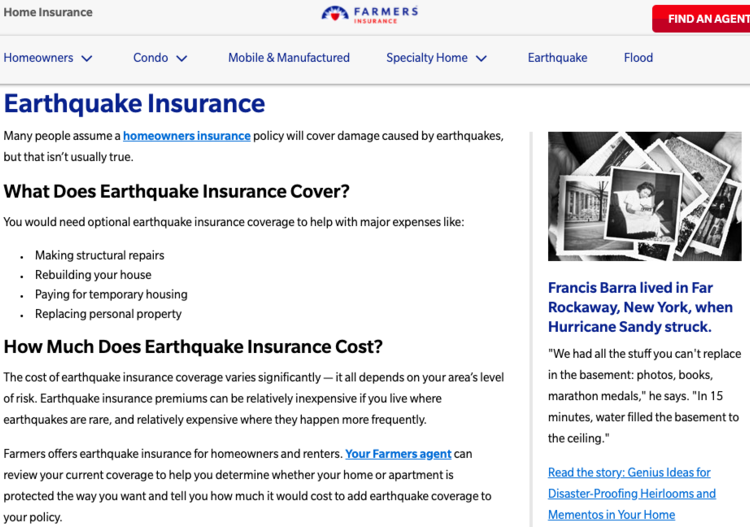Finding the best home insurance Australia offers can be challenging, particularly for those on a budget. The market presents a wide array of providers and policies, making it crucial to understand your specific needs and available options. This article will guide you through key aspects of home insurance, comparing prominent providers like Youi, AAMI, and ING, and offering practical tips to save money and avoid common pitfalls such as underinsurance.
Toc
- 1. Assessing Your Home Insurance Requirements
- 2. Comparing Major Home Insurance Providers in Australia
- 3. In-Depth Reviews of Major Insurers
- 4. Tips for Reducing Your Home Insurance Premiums
- 5. Related articles 02:
- 6. Understanding Policy Exclusions and Limitations
- 7. Addressing Concerns Related to Natural Disasters
- 8. Conclusion
- 9. Related articles 01:
Assessing Your Home Insurance Requirements

Types of Home Insurance
Home insurance primarily falls into three categories: building insurance, contents insurance, and combined policies. Building insurance covers the physical structure of your home, including fixtures and fittings. It’s essential for homeowners but may not be necessary for renters, as they typically need contents insurance. Contents insurance protects personal belongings within your home, such as furniture, electronics, and clothing. Combined policies offer both building and contents coverage, providing comprehensive protection.
Understanding these types is crucial when selecting the best home insurance in Australia. For example, if you own your home, building insurance is non-negotiable. However, if you rent, focusing solely on contents insurance may be the most cost-effective option.
Essential Coverages to Consider
When searching for the right policy, there are several essential coverages to prioritize. Common coverages include protection against fire, theft, and storm damage. It’s vital to consider your geographical location as well; for instance, living in flood-prone areas or bushfire zones may necessitate additional coverage. Some policies include specific protections for these risks, so ensure you thoroughly review what’s offered.
Understanding Policy Documents
An important aspect of selecting home insurance is understanding the policy documents provided by insurers. These documents outline the terms, conditions, and coverage details, including what is and isn’t covered. Familiarizing yourself with this information ensures you know your rights and responsibilities under the policy.
The Importance of Accurate Valuation
Accurately determining your home’s rebuild cost is paramount. Online calculators can provide estimates, but seeking professional valuations may yield more accurate results. This step is crucial to avoid underinsurance, which can leave homeowners vulnerable in the event of a disaster.
Differentiating Between New for Old and Agreed Value Policies
A common misconception among consumers is the difference between “new for old” and “agreed value” policies. “New for old” policies replace damaged items with brand new ones, providing a significant advantage in coverage. In contrast, “agreed value” policies pay out a pre-agreed amount, regardless of the current replacement cost. Understanding these differences helps consumers choose the right policy for their needs.
Comparing Major Home Insurance Providers in Australia
Overview of Leading Home Insurance Companies
With numerous home insurance providers in Australia, it’s important to understand your options. Here’s a concise overview of the top 10 home insurance companies in Australia, focusing on their strengths and weaknesses:
- Youi: Known for excellent customer service and flexible policies, Youi offers comprehensive home and contents insurance, which includes flood cover as standard.
- AAMI: AAMI is often praised for its affordability and comprehensive cover. It has won awards for value, making it a strong contender for budget-conscious consumers.
- ING: ING offers competitive premiums and various coverage options, although it may lack some optional extras compared to other providers.
- QBE: This insurer stands out for its comprehensive coverage and automatic inclusion of flood damage in many policies.
- Budget Direct: Recognized for its affordability, Budget Direct provides solid cover limits and various discounts, making it a popular choice among budget shoppers.
- Honey: A tech-driven insurer, Honey provides unique features like smart sensors to prevent accidents, although it may be less familiar to some consumers.
- Allianz: A global leader in insurance, Allianz offers extensive coverage options and a strong reputation for reliability.
- Suncorp: Known for its comprehensive policies, Suncorp provides robust coverage, particularly for natural disasters.
- Coles Insurance: Coles offers competitive premiums and straightforward policies, making it accessible for many consumers.
- RAC: This provider is highly rated for customer satisfaction and offers various additional coverage options.
The Importance of Comparing Quotes
When looking for the best home insurance, it’s vital to compare quotes from multiple insurers. This allows consumers to identify the best deals and coverage options suited to their needs. Utilizing reputable comparison websites can streamline this process, providing insights into the various policies available. However, it’s important to be aware of the potential drawbacks of these websites, such as limited information on specific policy details and possible biases towards particular insurers.
Current Trends in Home Insurance
An emerging trend in the home insurance industry is the increasing use of telematics and smart home devices. These technologies can monitor risks, such as fire or water leaks, and may lead to lower premiums for homeowners who install and actively use them. Insurers are beginning to recognize the value of such preventative measures, which can enhance overall safety and reduce claims.
Finding the Cheapest Home Insurance
Many consumers are drawn to the cheapest home insurance in Australia, but it’s crucial to remember that the lowest premium may not always equate to the best value. When searching for affordable policies, consider the price-to-coverage ratio. Evaluate what each policy offers and ensure it aligns with your needs. Sometimes, paying a bit more can provide significantly better coverage and peace of mind.
Balancing Cost and Coverage
While it’s tempting to seek out the lowest price, it’s essential to prioritize sufficient coverage over the absolute lowest price. Underinsurance can lead to significant financial hardship in the event of a major claim, potentially costing you more in the long run than saving on premiums initially.
In-Depth Reviews of Major Insurers
Youi Home and Contents Insurance Review
Youi’s home and contents insurance has garnered praise for its comprehensive coverage and customer satisfaction. Its policy includes essential protections against fire, theft, and storm damage, along with flood cover as standard. However, some customers have reported higher premiums compared to budget insurers, so it’s worth comparing quotes. Reviews on platforms like “Best home insurance Australia reddit” and “Best home insurance Australia reviews” often highlight Youi’s responsive customer service and claims process.
AAMI Home Insurance Review
AAMI is frequently recognized for its value and affordability, making it a popular choice among budget-conscious consumers. Its home insurance policies include standard coverages like fire, storm, and theft. Additionally, AAMI offers a multi-policy discount, which can be an excellent way to save if you bundle home and contents insurance. Customer reviews indicate satisfaction with claims handling, although some reports mention occasional delays.
ING Home Insurance Review
ING’s home insurance policy is designed for consumers seeking competitive premiums and flexibility. While it may not offer as many optional extras as other providers, its core coverages are solid. ING also provides discounts for bundled policies, which can help reduce costs. Reviews suggest that customers appreciate the straightforward claims process and responsive support.
Tips for Reducing Your Home Insurance Premiums
Increasing Your Excess
One effective way to lower your home insurance premium is by increasing your excess. This means you’ll pay more out-of-pocket in the event of a claim, but in return, you can enjoy lower monthly or annual premiums. It’s essential to strike a balance; ensure that your emergency fund can cover the excess amount should you need to make a claim.
Bundling Policies for Additional Savings
Bundling home and contents insurance with other policies, such as car insurance, can lead to significant savings. Many insurers offer multi-policy discounts, allowing you to take advantage of lower premiums while maintaining comprehensive coverage. It’s worth comparing the bundled rates against separate policies to find the best deal.
Taking Advantage of Discounts and Promotions
Insurance providers frequently offer various discounts that can help reduce your premium. These may include online purchase discounts, loyalty discounts, or discounts for installing security features in your home. Always ask your insurer about available promotions, as they can vary from year to year.
1. https://baohotbc.com/mmoga-best-pet-insurance-florida-a-guide-for-owners-of-older-pets/
3. https://baohotbc.com/mmoga-surest-insurance-reviews-a-comprehensive-guide/
4. https://baohotbc.com/mmoga-three-insurance-company-reviews-a-deep-dive-for-smb-owners/
5. https://baohotbc.com/mmoga-best-car-insurance-in-utah-a-guide-for-drivers-with-violations/
Investing in Home Security Features
Enhancing your home security can not only protect your belongings but may also lead to reduced premiums. Installing security systems, alarms, and cameras can lower your risk profile in the eyes of insurers, prompting them to offer better rates. Many insurers provide discounts for homes with specific safety features, making this a win-win situation.
Understanding Claims History Impact on Premiums
It’s important to understand that your claims history can significantly impact your future premiums. Multiple claims, even for unrelated incidents, can lead to higher premiums. Insurers view frequent claims as indicative of higher risk, which can result in increased costs over time. Keeping this in mind can help you make more informed decisions about when to file a claim.
Potential Drawbacks of Increasing Excess
While increasing your excess can lower your premiums, it’s crucial to consider the potential drawbacks. A higher excess means you’ll face increased financial risk should a claim occur. If an unexpected event arises, such as severe storm damage, you may find yourself in a challenging position if your excess is beyond what you can comfortably pay. Balance the potential savings with your financial situation before making this decision.
Understanding Policy Exclusions and Limitations
Common Exclusions in Home Insurance Policies
When selecting a home insurance policy, it’s crucial to be aware of common exclusions. These may include damages caused by specific natural disasters, pre-existing conditions, or wear and tear. Carefully reading the Product Disclosure Statement (PDS) is essential to understand what is and isn’t covered. For instance, some policies may exclude coverage for flood damage unless it’s explicitly included.
Importance of Insured Events
Understanding the concept of “insured events” is key to navigating your policy. Insured events are specific occurrences that your insurance policy will cover. Familiarizing yourself with these terms will help you assess whether a policy meets your needs. If you live in a high-risk area for natural disasters, ensuring your policy covers those specific events is critical.
Addressing Concerns Related to Natural Disasters
Coverage for High-Risk Areas
For homeowners in regions susceptible to bushfires, floods, or other natural disasters, securing adequate coverage is vital. Policies that include flood or bushfire cover are essential, especially if you reside in areas with a history of such events. Be proactive in reviewing your policy and considering additional protection options to safeguard your investment.
Considerations for Renters and First-Time Homebuyers
Renters should focus primarily on contents insurance to protect their belongings, while first-time homebuyers need to consider both building and contents coverage. Understanding the differences in coverage needs is crucial for both groups. First-time buyers should also be aware of the rebuilding costs in their area to avoid underinsurance.
Conclusion
Selecting the best home insurance in Australia requires careful consideration of your individual needs and budget. By understanding the different types of coverage available, comparing top providers, and implementing cost-saving strategies, you can secure a policy that provides adequate protection for your most valuable asset. Remember to read the Product Disclosure Statement carefully and stay informed about your coverage to make the most of your home insurance policy. With diligent research and the right approach, you can navigate the home insurance landscape effectively, ensuring that you find the policy that best fits your requirements while also being mindful of your budget.
1. https://baohotbc.com/mmoga-three-insurance-company-reviews-a-deep-dive-for-smb-owners/
2. https://baohotbc.com/mmoga-surest-insurance-reviews-a-comprehensive-guide/
4. https://baohotbc.com/mmoga-best-pet-insurance-florida-a-guide-for-owners-of-older-pets/
5. https://baohotbc.com/mmoga-best-car-insurance-in-utah-a-guide-for-drivers-with-violations/










